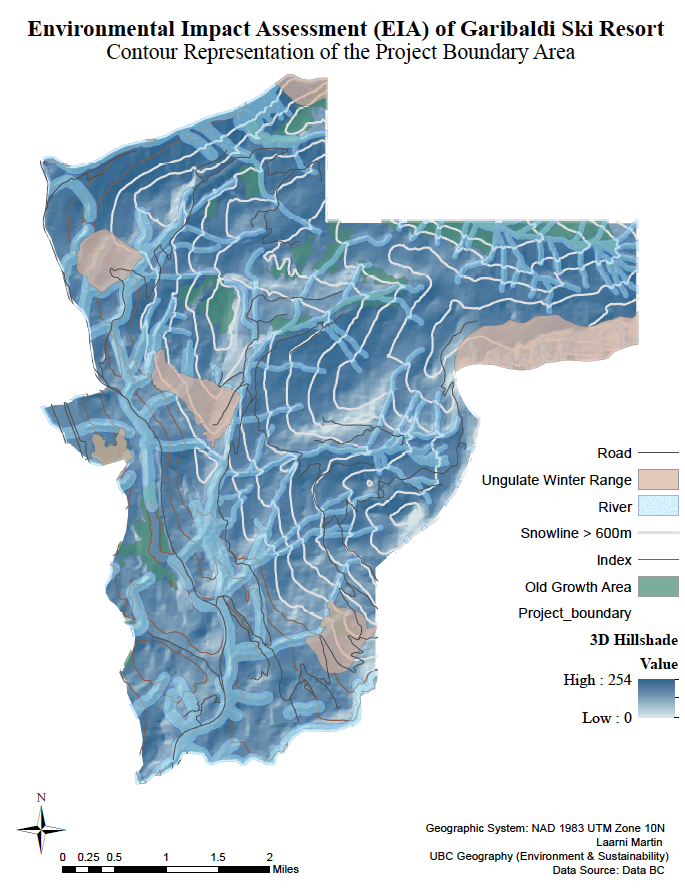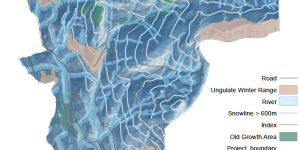Introduction
As a natural resource planner, the proposed Garibaldi Ski Resort in Squamish may bring economic opportunities in the area- both as a major employer from its construction to its standard operation and as a tourist destination. However, the proposed ski resort is not environmentally feasible both in the short term and long term due to sensitive ecological areas that might be drastically affected by the ski slopes and its overall effect in the global climate change.
- The protected areas constitutes approximately 42% of the project boundary:
- 89% protected area for mule deer and mountain goat habitat
- 76% for the old growth forest
- 7% for fish bearing streams and fish habitats, this includes the buffer zones.
Moreover, the entire project boundary area is sitting at an elevation <600m, which may potentially not accumulate enough snow for the ski slopes. This can be detrimental for the business operations.
Location
The proposed Garibaldi Ski Resort in Squamish is situated at an area with potential adverse risks to the environment that may result to decades or centuries of rehabilitation. I discern in my assessment some possible solutions to the ski result placement:
- It would be ideal to relocate the ski resort to a different location, either in Squamish or other surrounding cities to avoid extreme impacts on ecologically sensitive species, especially of the fish and fish habitats. It would be best to move the resort farther from river buffer zones, which means moving slightly further inland of Garibaldi.
- It is evident that the placement of the ski resort is in Garibaldi due to its convenience, wherein the resort is accessible through a major highway and its close proximity to Squamish city center. However, Garibaldi is almost adjacent to the mouth of the river, which means there is an abundant ecological life in that area.
- Build a smaller ski resort to lessen the impact on these important ecological sites.
- The lower mainland area of British Columbia is dotted with ski resorts, from the massive and world-renowned Whistler ski resorts to the smaller and more accessible ones just off the North Shore. Due to this, the least environmentally impactful solution is to scrap the entire project.
- If our economy is not making any changes into how we develop projects, our Climate Change impacts will not lessen, hence there will be more adapting and mitigating in the future.
Limitations
- The sources of error in my analysis could be from the varying methods I used to calculate the percentage of these protected areas.
- There is a ~4% difference from my percentage calculations using two different methods: The manual summation of all clipped protected areas versus the union and dissolve method.
- The differing projected coordinate systems of these projected layers could have also affected the calculations of the main result
To better assess the proposed project, it would be helpful to include the construction activities such as:
- Clear-cutting to create dirt roads for trucks to enter the site
- Noise pollution
Possible adverse climate change effects in both a micro to macro-scale



Accomplishment Statement:
Mastered clipping layers into a boundary layer; such as clipping Old Growth Area, Ungulate Winter Range, rivers, roads, snowline > 600m, and index in the Project Boundary area.
Learned how to show 3D hillshade under the Spatial Analyst Tool.
Grasped the concept of contour intervals and how to edit them with the Contour tool.